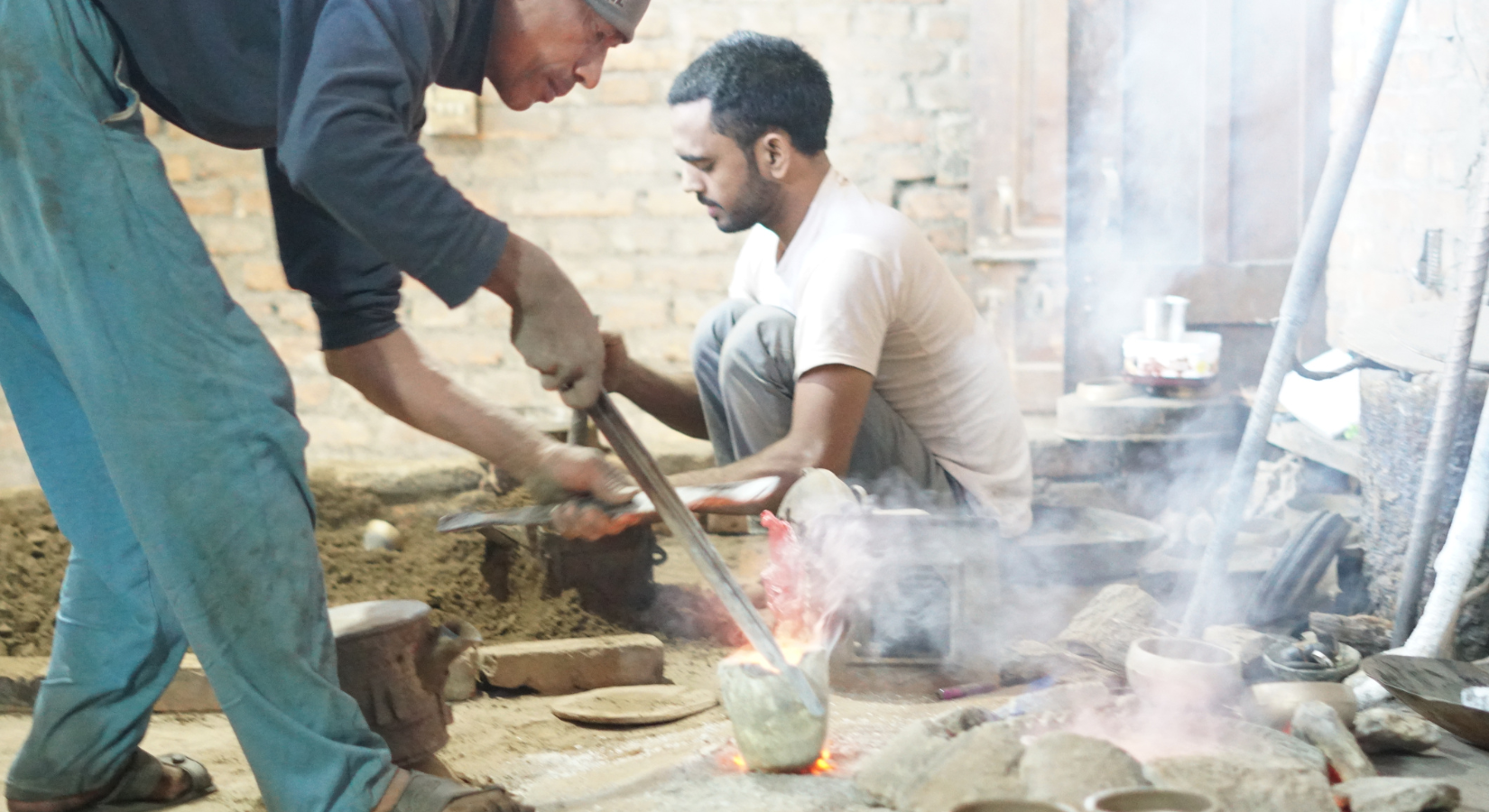These fascinating instruments have a history as varied and complex as the music they make. Singing bowls have been treasured by numerous civilizations for millennia, with origins stretching back through antiquity. They are not just works of art, but cultural heritage repositories, each precisely designed to transmit a particular resonance with the past.
The history of nations, the growth of workmanship, and the melodies that have resonated through sacred temples and spiritual gatherings are all included within their curving forms. They embody expert hands and intense devotion, transcending mundane instruments to become portals to the spiritual and transcendent. Throughout this investigation, we will delve into the historical foundations of singing bowls, looking at their early applications and the procedures that brought them to be.
The Origins of Singing Bowls
Singing bowls, which are associated with Tibetan and Nepalese spiritual traditions, have a long history. They date back to ancient times and were painstakingly created by talented artisans. The art of making singing bowls has been passed down through centuries and represents cultural heritage in certain areas.
These instruments have a profound spiritual significance. They were important in Buddhist ceremonies and meditation in Tibet, where they were thought to inspire profound introspection. Nepal, which is well-known for its metallurgical expertise, saw committed artisans, particularly from the Newar community, develop the technique. Making a singing bowl is a spiritual journey, with each step packed with holy meaning and preserving ancestral knowledge and wisdom.
The origins of singing bowls reflect long-standing cultural traditions and spiritual practices in Tibet and Nepal. Exploring their beginnings reveals a world of rich traditions, devotion, and worship.
The Craftsmanship Behind Singing Bowls

Singing bowls are works of art as well as instruments. Each bowl is painstakingly made from a one-of-a-kind metal alloy that incorporates copper, tin, and other elements. The transformation of basic materials into these sonorous marvels demonstrates the artisan's skill and passion. Shaping and toning each bowl is no easy feat; it necessitates a deep grasp of metallurgy that has been passed down through generations.
It's a painstaking procedure that necessitates not only material mastery but also an unyielding dedication to crafting the perfect sound. These bowls transcend mere workmanship in the hands of expert artisans, becoming stunning representations of artistry and devotion.
The Cultural Significance
Singing bowls have a deep spiritual importance in Tibetan and Nepalese traditions. They serve as vessels of old wisdom in rituals, ceremonies, and meditation activities. These bowls' relaxing resonance is thought to connect individuals with higher worlds, making them important in spiritual endeavors. They bridge the earthly and the divine with each melodic tone, offering a sacred space for introspection and connection.
These resonant vessels are more than just musical instruments; they are portals to the holy, their exquisite tones echoing centuries of history. They express a great appreciation for the balance that exists between the human soul and the universe, and their cultural significance transcends beyond ceremonies. They sing to remind us that we are all part of a larger cosmic symphony.
The Healing Properties of Singing Bowls

Singing bowls are not only cultural symbols; they are also therapeutic aids. The vibrations created by hitting or playing a singing bowl have been shown to have deep and positive effects on mental, emotional, and physical well-being. This ancient method, also known as sound therapy or sound healing, has grown in popularity around the world. The resonating tones wash over the listener, inducing a sense of calm and relaxation.
These calming vibrations have the ability to relieve tension and anxiety while also promoting mental clarity. They restore balance and harmony by stimulating the body's inherent healing mechanisms. Singing bowls are more than just musical instruments; they are portals to renewal and holistic well-being.
Singing Bowls in Modern Times

While singing dishes have profound verifiable roots, they have flawlessly adjusted to current life. Their serene songs and recuperating properties have tracked down a spot in the realm of wellbeing, contemplation, and elective medication. Yoga studios, all encompassing mending places, and even families have embraced singing dishes for their quieting and focusing impacts.
In an undeniably speedy world, these old instruments offer a reprieve, welcoming people to reconnect with their internal identities, encouraging care and a feeling of prosperity. As the requests of contemporary life strengthen, singing dishes act as a calming emollient, a sign of the getting through concordance that can be tracked down amidst disorder.
Conclusion
In closing, singing bowls are not just musical instruments; they are vessels of history, culture, and spirituality. They have transcended time and boundaries to become a unifying force in the pursuit of inner peace, healing, and spiritual connection. Whether you're drawn to their rich history, their captivating craftsmanship, or their profound healing properties, singing bowls have an enduring and harmonious presence in our world.
As we embrace the serene tones of singing bowls in our modern lives, we not only connect with age-old traditions but also discover a path to inner serenity. The vibrations resonate not only through the metal but within our very being, calming the chaos of our busy lives. They provide a sanctuary of sound, offering moments of reflection and rejuvenation.
The cultural significance of singing bowls, once confined to their places of origin, has now become a global phenomenon. These timeless instruments are bridges that span continents and generations, uniting people in the pursuit of mindfulness, holistic well-being, and spiritual growth. So, whether you are an art enthusiast, a seeker of inner peace, or a curator of ancient traditions, the allure of singing bowls endures, offering a resounding promise of harmony and unity across cultures and time itself.







